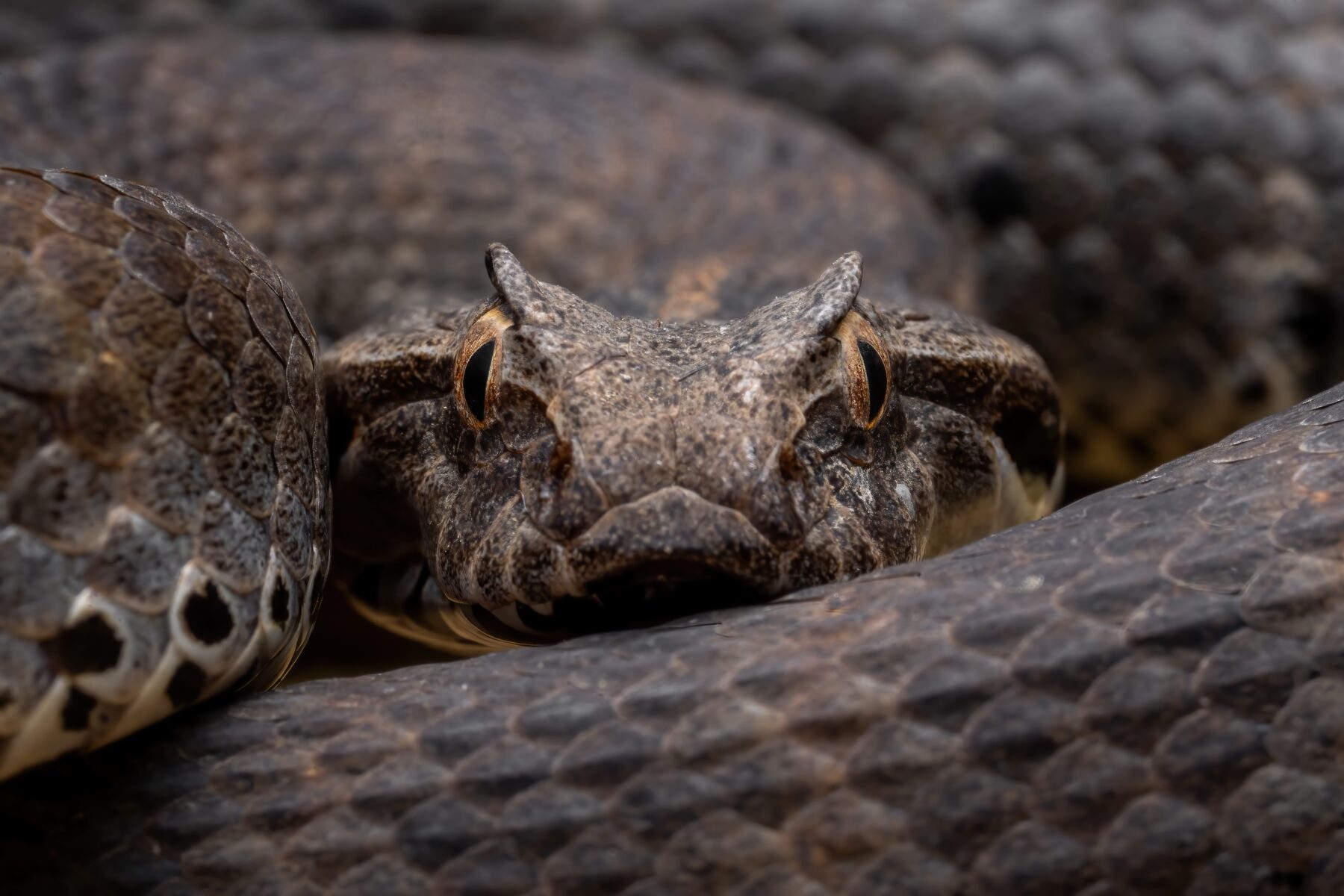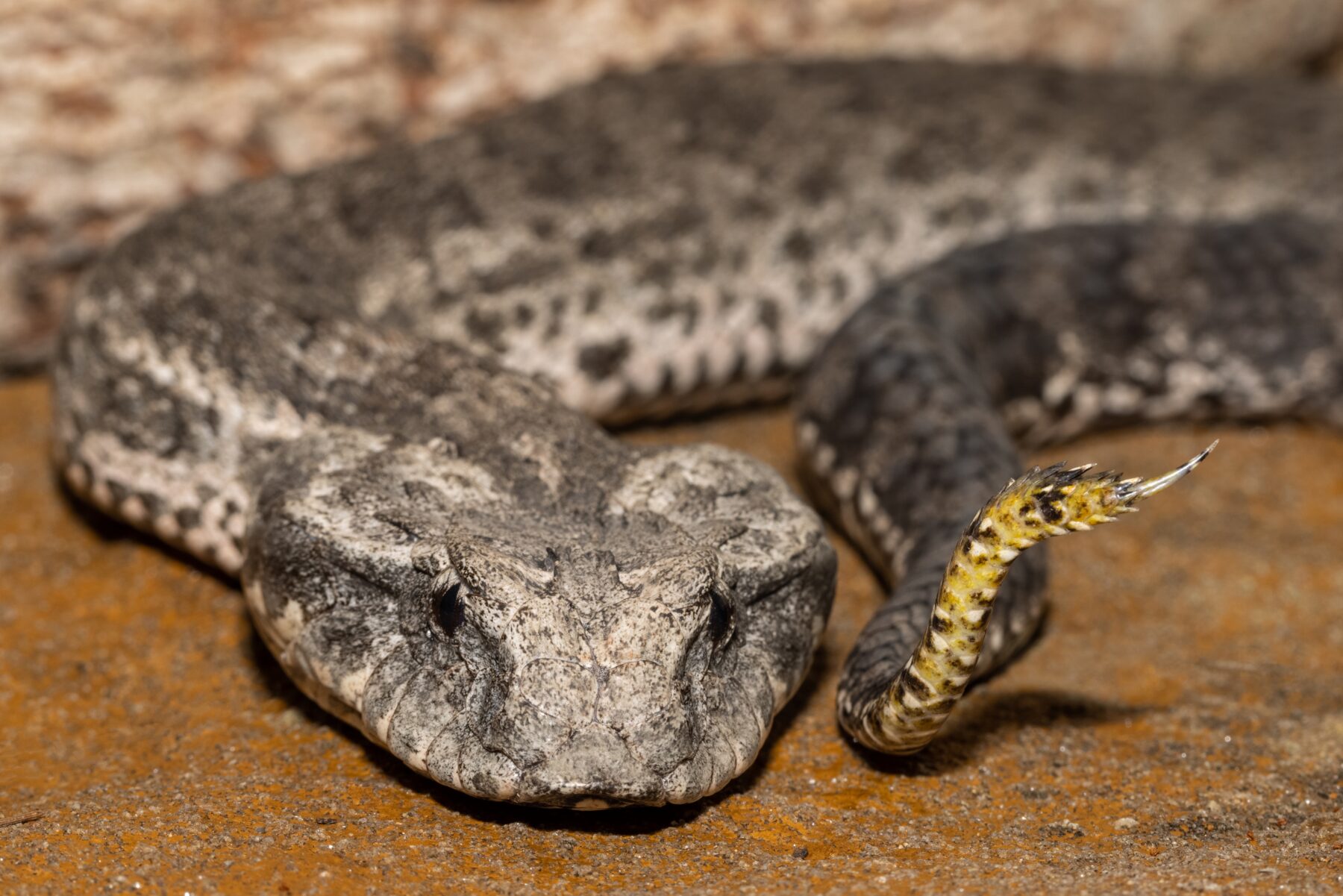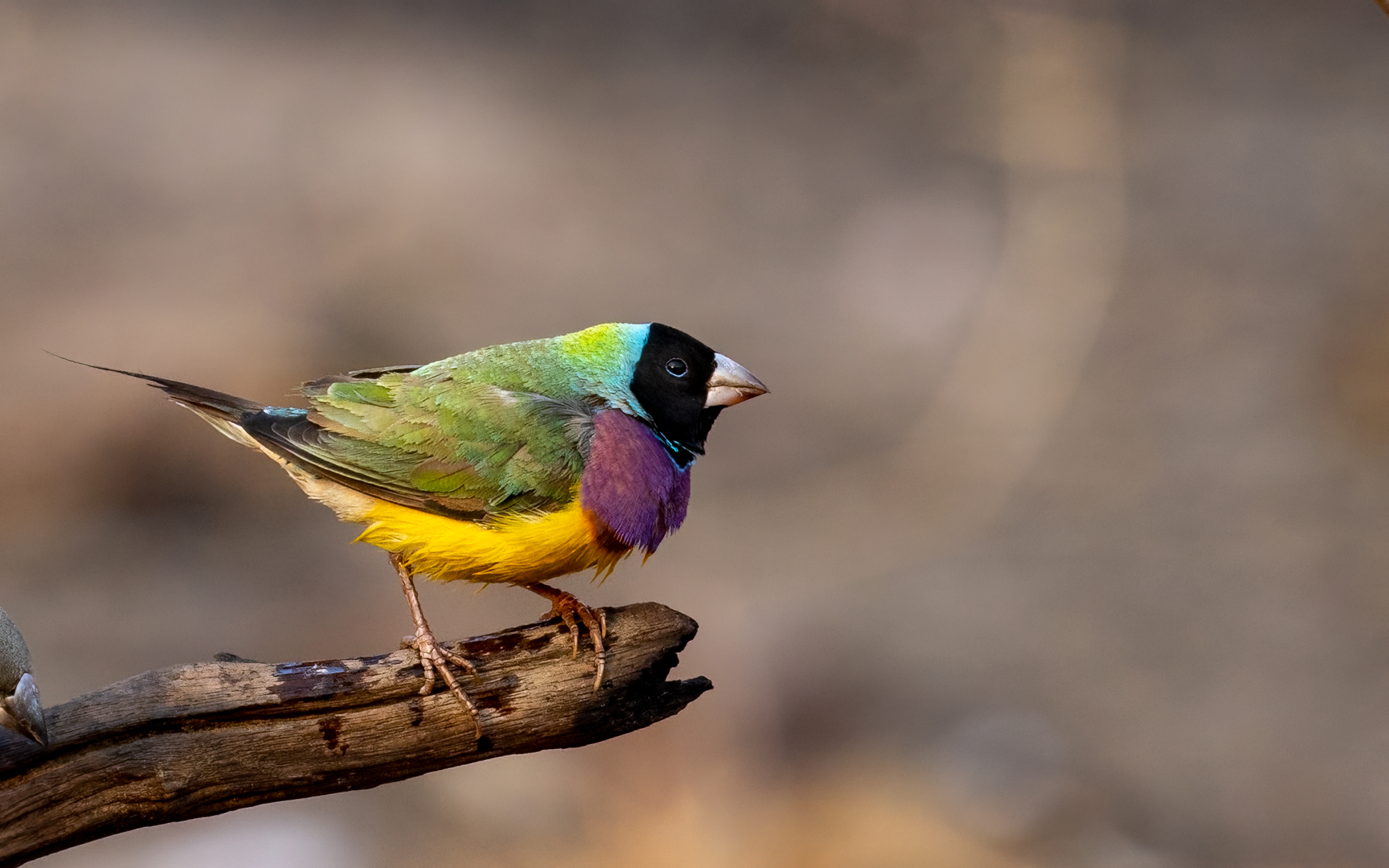| Common name | Common death adder |
| Scientific name | Acanthophis antarcticus |
| Type | Reptile |
| Diet | Frogs and small reptiles, birds and mammals |
| Average lifespan | Up to 15 years |
| Size | Males average a length of 44cm and females, which are bigger, have an average length of about 58cm; they can, however, grow to a metre in length |
You could never mistake a death adder for any other snake – that is, if you see it in the first place. These reptiles are supreme masters of disguise, which is essential to their whole way of life. Unlike most other venomous snakes, which hunt to locate their prey, death adders are ambush predators that wait unseen for prey to pass by.
Their stocky bodies don’t look as if they could move fast, but when they sense potential prey close by they react with lightning speed to inflict a highly venomous bite. No other venomous Australian snake strikes as fast.

As well as having that characteristic short stumpy body shape, adders also have a distinctive arrow-shaped head, narrow neck, and a thin tail with a curved tip that they shake around near their mouth like a worm to lure potential prey close.
This species, the common death adder (Acanthophis antarcticus), is one of seven known species of death adders occurring in Australia. It’s found in all mainland states and territories in a wide variety of habitats – from rainforest, open woodland and scrubland to coastal heathland. It prefers locations with a lot of leaf litter or forest debris in which it can hide away.

The venom of all death adders is potentially fatal to humans and, before an antivenom was developed in the late 1950s, more than half of people bitten would die. Last century there were at least five recorded human deaths attributed to death adders. There have been none this century, so far.
Death adders are threatened by a loss of habitat, but more of a threat is the introduced and highly invasive cane toad. Young death adders are eaten by these toads. And adult death adders are fatally poisoned by the toxic glands in cane toad skin when they eat these amphibians.









